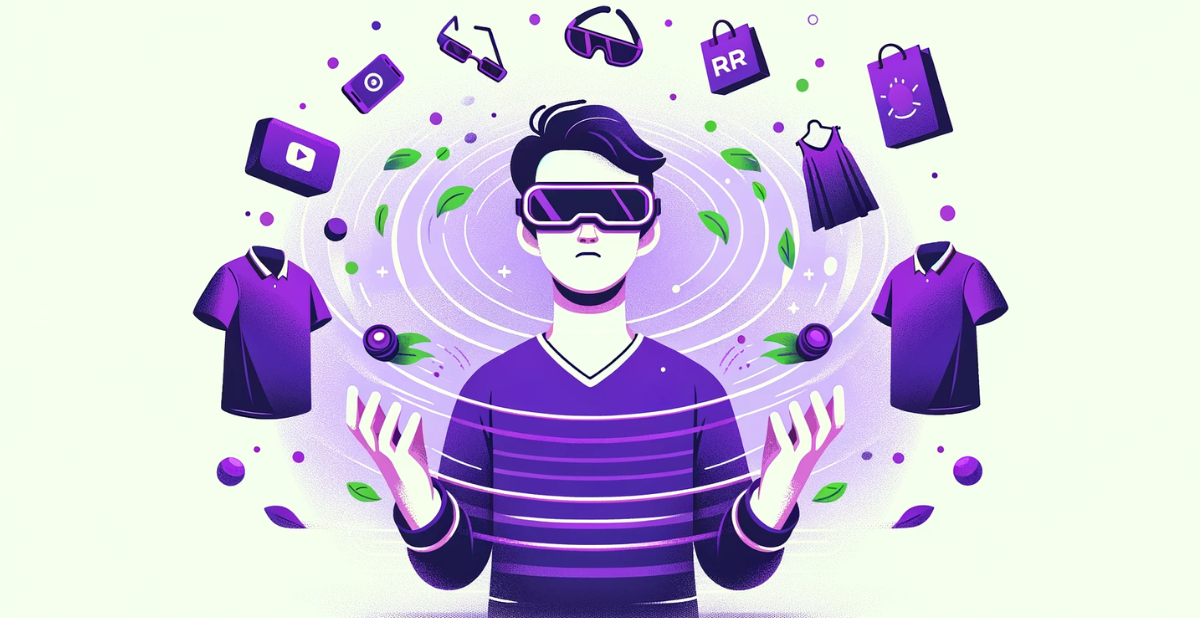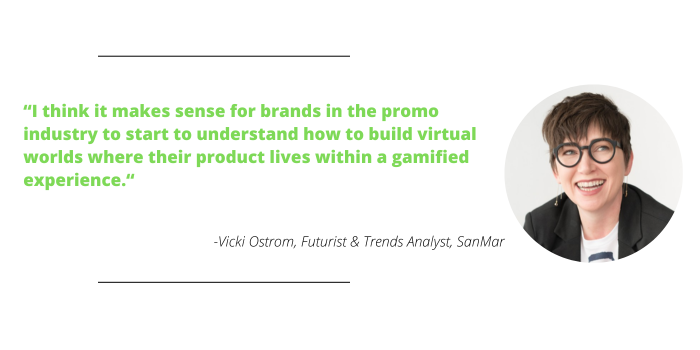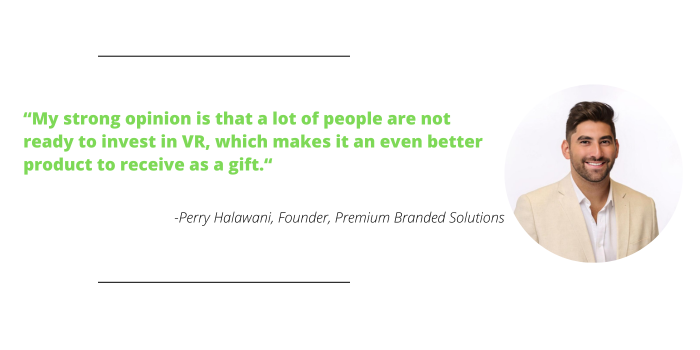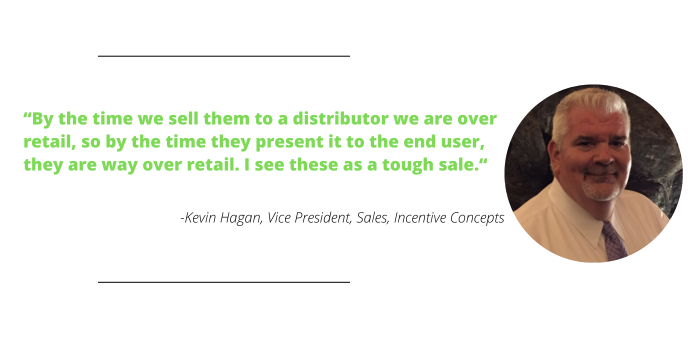Does Augmented Reality Have A Future In Promo?

Virtual reality has been teased as the future of human leisure since the days of The Jetsons. Now that we have caught up to that future, and VR headsets are available for purchase, the general public seems to have mixed feelings. Some people want to try out the experience for curiosity’s sake and while others judge or poke fun at anyone willing to pay large sums of money to wear the not-so-subtle gadget.
That dynamic was on display upon the release of the highly anticipated Apple Vision Pro last month, with public responses including quite a bit of negative or embarrassing press.
This leaves some promo suppliers in a quandary. Will VR equipment represent a future opportunity for high-end promo or is it an expensive fad? Vicki Ostrom, who holds the role of “futurist” for SanMar – the No. 1 supplier in the inaugural PPAI 100 – suggests that being prepared to offer branded VR options is a way to cater to a generation that will only grow in influence.

“I think it makes sense for brands in the promo industry to start to understand how to build virtual worlds where their product lives within a gamified experience,” Ostrom says.
It’s a delicate line to walk for suppliers. In an industry focused on brand enhancement, an expensive gadget that is the butt of jokes in the public discourse might be the least desired outcome. Yet, the opportunity to offer the next “wow product” is a way for any promo company to stand out.
Public Rolls Eyes At Apple Vision Pro.
When Apple releases a new product, you can usually expect long lines outside retailers. With the Apple Vision Pro’s debut last month, there was more press covering the lines of people hoping to return the virtual reality headset. Common complaints included:
- Eye strain and vision issues.
- Discomfort from the device being heavier than users expected.
The Apple Vision Pro retails for $3,500.
One editor of a tech publication suggested that the device caused a popped blood vessel in his eye. Others simply suggest that their eyes were irritated after using the device, as it puts a 4K screen inches away from your face.
- Medical experts state that the notion that screens make your vision worse is actually a myth, but the unusual sensation of the VR device could be causing people to forget to blink causing short-term irritation.
It should be noted that Apple is not the first company to release a VR product. Meta’s Oculus Quest 2 retails for significantly less, and the company has been in the market longer to work out kinks.
Promo Perspective
Promo suppliers have seen varying results with offering VR equipment. It can be one of the higher end products that a distributor works with.
- Premium Branded Solutions, based out of Delaware, has offered the Oculus Quest for approximately two years. Founder Perry Halawani says the company typically sees distributors sourcing this product for high end, in-person recognition gifts for executives.
Halawani makes an interesting point that the curiosity or “wow factor” of something like a VR headset interests a lot of people, but the price tag and mixed reactions scare consumers away, which creates an interesting opportunity for promo.
“My strong opinion is that a lot of people are not ready to invest in VR, which makes it an even better product to receive as a gift,” Halawani says.

On the other hand, Kevin Hagan, vice president of sales at Incentive Concepts, which has tech offerings mostly in audio, says that the appeal of VR is noteworthy, but that it is a difficult product to pull off in the current marketplace.
“I have not seen a lot of requests for these, although I know they are extremely popular,” Hagan says. “I also know the margin is tight. By the time we sell them to a distributor we are over retail, so by the time they present it to the end user, they are way over retail. I see these as a tough sale.”

What Will The Next Generation Dictate?
Millennials, Gen X and baby boomers have been promised some form of virtual reality for years via pop culture. So for them, any kinks or limitations might appear as a failure to live up to what they envisioned or what was portrayed in science fiction.
- But members of Gen Z and younger have come up with this technology as just another available product and are perhaps more willing to come in with realistic expectations or more patiently trouble shoot.
The Alpha generation (born between 2010-2014) and Gen Z are sometimes combined by researchers into what is commonly referred to as “Zalphas.”
“This is a huge group – because they are both large generations already,” Ostrom says. “Then you add them together and they become the largest generation the globe has ever known.”
- According to the National Retail Federation reports that in the US, 80 to 90% of families say children under 12 years old influence their purchase decisions.
As Ostrom points out, a majority of children ages 7-to-12 years old cite gaming as their favorite pastime. This is not necessarily something that they are going to grow out of, rather they will only graduate to more sophisticated gaming technology, which is likely to include more refined versions of VR. This will become the dominant demographic in promo in the future.
All of this could potentially open up a world of possibilities for the entire marketplace.
“It would be good to develop ways to interact with and engage the Alpha, ZALPHA and Gen Z generations utilizing these new technologies,” Ostrom says. “Let them interact with your products through these gamified worlds and even better, since they are a generation that loves to create and build and be a part of the process – let them help to build your next products through a game or a world you create just for them.”

